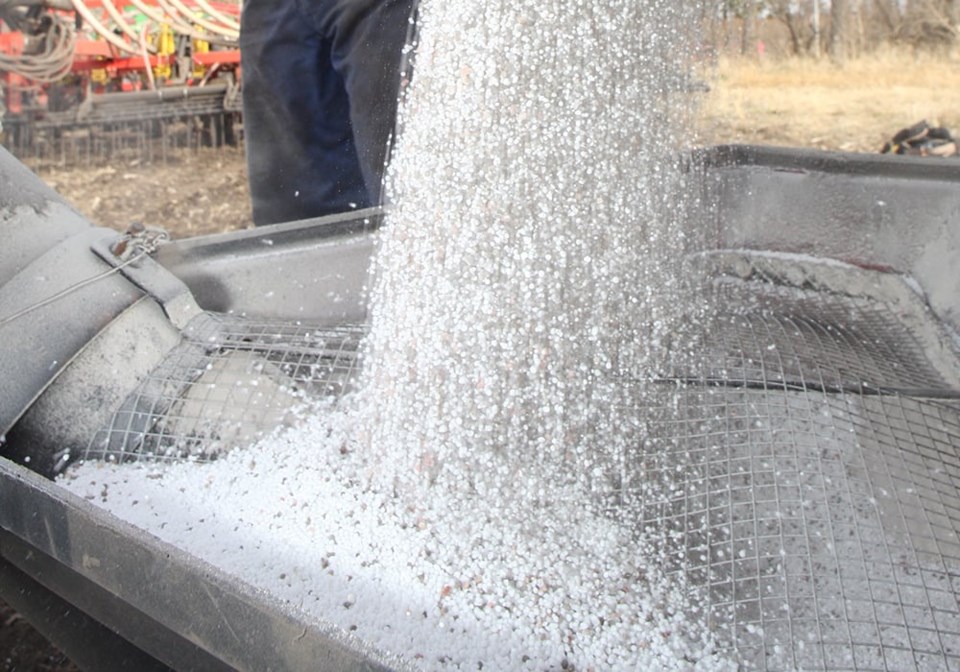WESTERN PRODUCER — David Rourke is committed to cutting greenhouse gas emissions from crop production.
So much so, he’s working on a PhD thesis at the University of Manitoba, focusing on how Canadian grain farmers can help with the climate crisis.
Nonetheless, Rourke doesn’t use enhanced efficiency fertilizers on his farm near Minto, Man.
There’s a reason for that.
“In our case, we really hate spending money without getting a return on it,” said Rourke, who is 67 and started his PhD thesis when he was 65.
Many western Canadian farmers likely feel the same way about enhanced efficiency fertilizers — products that reduce nitrogen loss.
Only 10 to 15 percent of the fertilizer volume on the Prairies is enhanced efficiency fertilizers, says survey data from Fertilizer Canada.
However, new research from the University of Saskatchewan might change how Rourke and other farmers think about EEFs.
For the last two years, scientists from the U of S and Agriculture Canada applied urea and SuperU, an EEF with urease and nitrification inhibitors, at sites in Melfort and Saskatoon.
The scientists cut the rates by 10, 20 and 30 percent, for both the urea and the SuperU, to study the consequences for crop yields. The fertilizer in the experiment was side-banded.
“We found we could lower the (SuperU) rate to 20 below the soil test recommendation and get a large emissions reduction, around 40 percent, and no impact on yield in both canola and wheat,” said Richard Farrell, a U of S soil scientist.
“The yields were not significantly different from the 100 percent (soil test recommendation rate)…. Moving into that 20 percent reduction gave you the best of both worlds. A nice emissions reduction and no effect on yield.”
The emissions reduction is for nitrous oxide, a powerful greenhouse gas. One kilogram of N2O released into the atmosphere is equivalent to about 300 kg of carbon dioxide. Nitrous oxide from soils is a major source of emissions in agriculture, representing about 40 percent of greenhouse gases from Canadian farms.
The federal government is asking farmers to cut 30 percent of their N2O emissions from fertilizer by 2030.
The federal program is voluntary, but market forces are pressuring Canadian farmers. Global food and ingredient companies are cutting their carbon footprints. Soon, major firms could buy grain only from producers who are cutting greenhouse gas emissions on their farms.
EEFs could be a big part of the solution.
Fertilizer Canada says enhanced efficiency fertilizers can reduce emissions by 10 to 50 percent, depending on the product.
“The most effective at reducing N2O emissions are nitrification inhibitors. These products typically reduce N2O emissions by 25 to 49 percent,” says a Fertilizer Canada consultation document submitted to the feds.
The science indicates that EEFs can cut emissions, but few producers use the products because of simple economics. They cost more and crop yields are the same.
“Replacing conventional N with an EEF on a pound for pound basis will increase costs without an increase in revenue,” Fertilizer Canada says.
The U of S research showing it’s possible to cut rates and achieve the same yields might change farmer perceptions of EEFs.
“The thing about enhanced efficiency fertilizers is everybody sort of forgets the name is ‘enhanced efficiency’… they are actually meant to go in at lower rates,” said Farrell, who studies agricultural soils and GHG emissions.
Most of the research on EEFs has been at a 100 percent soil test rate because scientists were studying emissions and were less interested in the agronomics, Farrell explained.
Earlier this year, he estimated that enhanced efficiency fertilizers cost about 15 percent more than conventional fertilizers.
If a grower applies an EEF at 80 percent the recommended soil test rate, and still achieves the same yield as urea at 100 percent, the economics of an EEF become more appealing.
“The premium (price) on the EEF would be offset by the lower amount needed,” Farrell said.
“We’ve been selling them (EEFs) for emissions reductions. But farmers don’t get paid to reduce emissions. They get paid for the crop they produce. There has to be an agronomic benefit.”
Farrell and his colleagues, Reynald Lemke of Agriculture Canada and Kate Congreves of the U of S, still need to analyze the data from the sites in Saskatoon and Melfort.
“There appears to be opportunity, under (certain) circumstances, to reduce fertilizer N rate (with SuperU) to achieve N2O reductions with minimal yield penalty, but the ability to accurately predict when and where those appropriate circumstances occur, remains a considerable challenge,” Farrell said.




